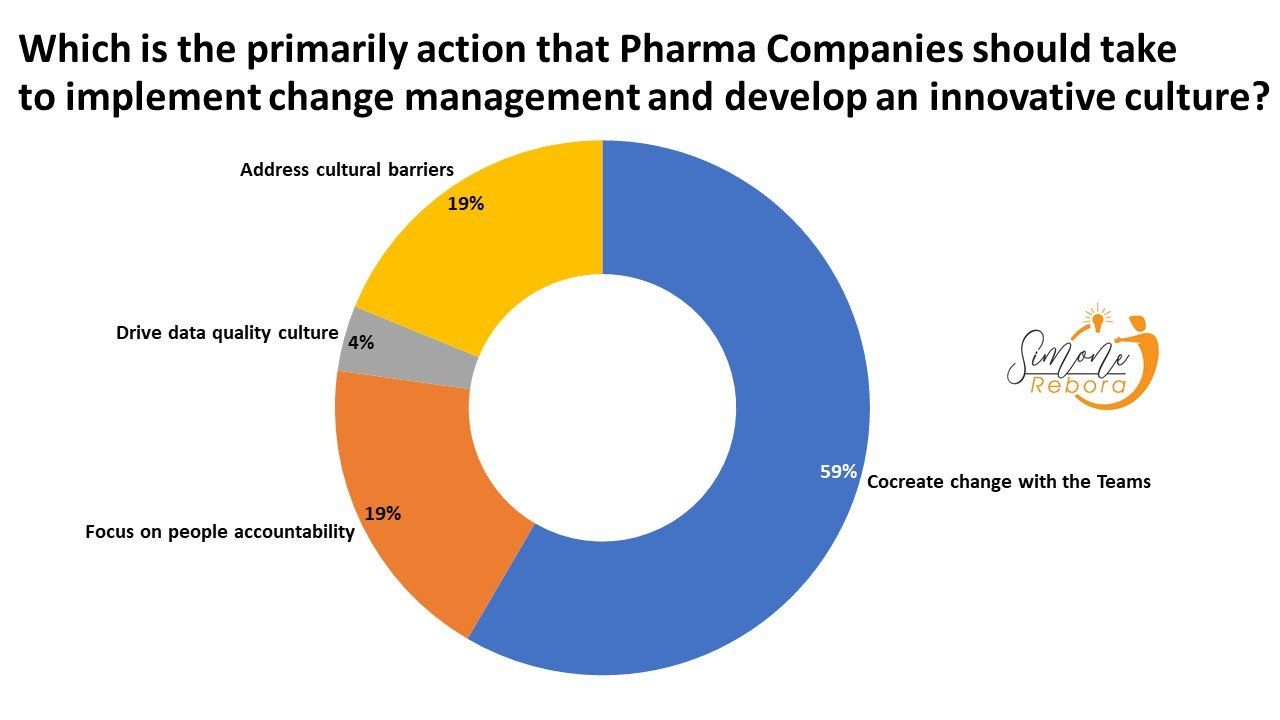BIG PHARMA IN THE MIDDLE OF A GREAT EVOLUTION THANKS TO INNOVATION, CHANGE MANAGEMENT AND PEOPLE
Simone Rebora • 29 settembre 2021
Suddenly, over the last 2 years, Biopharma companies have invested enormously in advance analytics and machine learning to organise internal and external data and information, to improve the customer’s interactions, increase services and drive incremental sales.
Did you know that Big Pharma are investing a lot of money, resources, time, and human effort to improve their interactions with customers? This is because they realised that were sitting on an enormously valuable asset: the data they produce, record, and purchase. Nevertheless, this amazing heritage has always remained unused, reducing the capacity of value creation in the pharmaceutical industry.
Suddenly, over the last 2 years, Biopharma companies have invested enormously in advance analytics and machine learning to organise internal and external data and information, to improve the customer’s interactions, increase services and drive incremental sales. This is one of the greatest process of change management that the pharma industry has ever seen: we are not talking about innovation, but rather change management, and as with every single process of change, the biggest threat to this process is resistance to change from people that don’t want to drive the future.
You are probably wondering which roles are reluctant to change? Surely, people that don’t want to get tired and challenge the status quo, because change is super tiring and requires us to rethink what we have done in the past; it means breaking your routine and experimenting with something new; it means imagining processes and governance differently. In a nutshell, it’s complicated!
Generally, Sales Reps and commercial Leaders think that sales model, that has worked for decades, can continue endless, using the same way of approaching, the same channel and content, not thinking that technology can be a valuable tool to help the in improving their performance in an increasingly competitive market.
From my perspective there are 5 different, but equally important actions, that biopharma companies can take to implement change management, overcome resistance in their Teams, develop a digital culture basing on the evidence of the data:
1) Cocreate the change with the Teams
2) Reinforce the accountability of the people
3) Get the buy-in of first line Managers
4) Drive the best data quality culture
5) Address cultural barriers
COCREATE THE CHANGE WITH THE TEAMS: Too often, next-generation experiments are projected in some hidden corner of headquarters and then rolled out to a few regions. Especially, when offices are not part of the experiment, this approach generates suspicion from the start to all the people that can take part of the change.
For instance, when you want to provide a machine learning tool to sales reps, they generally begin believing that headquarters does not think that they know how to do their jobs or that Big Brother is watching.
Firstly, Field teams must be engaged from the very beginning to prevent this from
happening. Reps and field managers need to be actively involved in cocreating the
experiments in a way that makes the most of their years of experience. It neds to create Ambassadors and super Users who can discuss and prevent any kind of various questions, accurately positioning advanced analytics and machine learning as useful tools for the field team, so that the sales organization can prepare the ground for a fertile experiment.
REINFORCE THE ACCOUNTABILITY OF THE PEOPLE: the biggest fear is that new technology will make people more controlled and driven by an engine than they already are. As it is, many companies are beginning to use tools that can suggest which doctors to visit and how often, and they drill their reps on the precise messages to convey besides recommend the weighted channel mix.
So, in order to overcome the threat to be perceived as an imposition, new technology
needs to be presented as a tool that cuts through the noise and aids decision
making—not a tool that dictates what to do next, because people decided what to do next. People are accountable of their destiny, they will decide the next best action, using the best tool to take the best decision.
GET THE BUY-IN OF FIRST LINE MANAGERS: Regardless of what top senior management espouses, the perspective of the first-line leaders—their advocacy for a new idea, their coaching of the reps on how to use it to drive sales performance, and their steadfast enforcement of accountability—determines whether the people will ultimately adopt the change or not. So, it’s key to find out if the first-line managers want to adopt the technology and whether they’re able to instruct others on how to use it. If first-line leaders don’t embrace the new technology, it may not be adopted by enough sales reps to be successful.
DRIVE THE BEST DATA QUALITY CULTURE: Data quality is an essential condition of data based on factors such as accuracy, completeness, consistency, reliability and whether it's up to date. Measuring data quality levels can help organizations identify data errors that need to be resolved and assess whether the data in their IT systems is fit to serve its intended purpose.
The attention on data quality in enterprise systems has increased as data processing has become more complex linked with business operations and organizations increasingly use data analytics to help drive business decisions. Data quality management is a core component of the overall data management process, and data quality improvement efforts are often closely tied to data governance programs that aim to ensure data is formatted and used consistently throughout an organization. Don't forget garbage in, garbage out!
ADDRESS CULTURAL BARRIERS: Inevitably, challenges that are deeply embedded in a company's culture can get in the way of implementing change management and next-generation experiments. For example, a culture with an intense focus on reach-and-frequency tactics may encounter resistance to systems that ask for more creativity in driving the business.
Alternatively, if there’s an underlying distrust of senior management, it can
manifest itself as resistance to a next-generation program. In such situations, the
people involved in driving the next-generation model may just see friction, not the
underlying issue. From my perspective, test and learn is the best way to address cultural barriers.
In the next years, Pharma companies must find out different ways to make the next best action in order to be more appealing in a fast changing complex environment.
Biopharma must achieve the levels of next-generation selling capability that are propelling other industries are relentlessly looking for.
Recently, I have launched a poll to find out which is the primarily action that Pharma Companies should take to implement change management and develop an innovative culture (you can find the outcomes in the exhibit below), with interesting results. Thus, from your perspective, which is your answer?
Please, let me know!

Over the past months, through my LinkedIn series “Chapter: The Promise Journey,” I have explored how AI is weaving a transformative red thread throughout pharma’s complex ecosystem. This article offers a comprehensive summary and reflections on the early stages of this journey, highlighting the immense promise AI holds, and the leadership and cultural shifts required to fully realize its potential.

As artificial intelligence reshapes the pharmaceutical landscape, I am compelled to synthesize the key milestones and reflections from my LinkedIn series, The Promise AI Journey, into this first comprehensive summary. This article distills lessons from building AI roadmaps, navigating Pharma’s unique challenges, and envisioning a future where AI accelerates both innovation and ethical responsibility.


